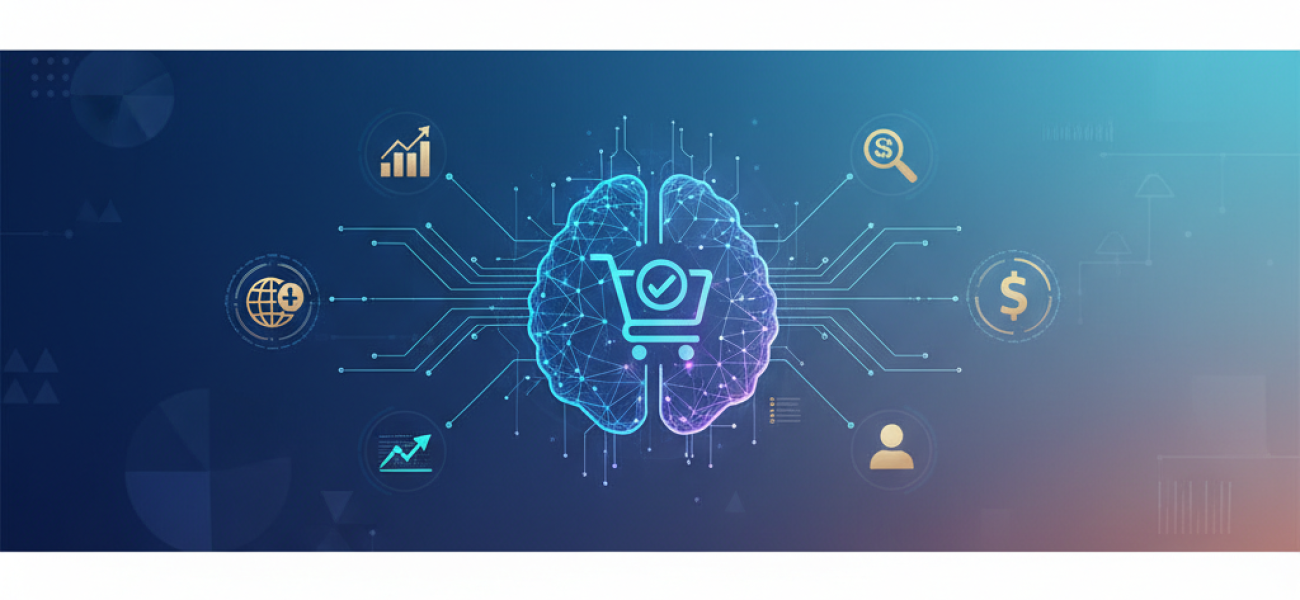Introduction: Understanding Google AI Overviews
Recent trends in the realm of search engine optimization (SEO) reveal a significant evolution in how consumers engage with digital content, particularly through Google. The emergence of Google’s AI Overviews marks a pivotal shift in user behavior, navigating the fine line between information gathering and actual purchasing decisions. As highlighted by a comprehensive BrightEdge analysis examining thousands of ecommerce keywords over a six-week period, the role of AI in search presents critical insights for marketers and ecommerce brands alike.
The Role of AI Overviews in Consumer Research
The findings from BrightEdge’s analysis suggest that AI Overviews serve primarily as a tool for research and discovery rather than a direct avenue for sales conversions. This era marks a significant departure from traditional search methods, where transactional inquiries dominated. Instead, AI-driven results present users with a wealth of information that aids in product evaluation and decision-making processes.
Why It Matters for Ecommerce Brands
As consumer behaviors evolve, so too must the strategies employed by ecommerce brands. The insights from BrightEdge indicate that while AI Overviews enhance the visibility of educational content, traditional search queries continue to dominate the bottom of the sales funnel, directly influencing purchases. Therefore, brands need to enhance their visibility and create content that not only educates but also guides potential customers toward making a purchase when it matters most.
The Numbers Behind AI Overview Performance
According to the analysis conducted between September 1 and October 15, the coverage of AI Overviews surged to 26% in September—a notable indicator of interest and engagement—only to retract sharply to 9% by October. Despite this dip, 30% of keywords managed to retain their ranking even after the decline, reflecting a dynamic landscape where adaptability is key.
Year-Over-Year Keyword Churn
The data revealed an 82% year-over-year keyword churn, indicating a rapid turnover where only 18% of keywords from the previous year remained relevant into 2024. This constant evolution underscores the importance of staying ahead of market trends and consumer interests, especially in an era where Google Ads automation and AI marketing are redefining campaign performance metrics.
Category-Specific Insights
BrightEdge’s detailed analysis explored keyword retention across various categories within ecommerce, yielding fascinating insights about stability and volatility. Some categories demonstrated significant resilience to the AI Overview pullback, while others showcased high rates of keyword loss.
High Retention Categories
Categories experiencing high retention included:
- Grocery & Food: 56% of relevant keywords retained AI Overview coverage
- TV & Home Theater: 43% of keywords remained stable
- Small Appliances: 37% showed resilience
These categories illustrate sectors where educational content is crucial, aligning with the consumer’s desire for information before purchasing.
Low Retention Categories
In contrast, categories with low retention rates, such as Furniture (3%), Home Décor (7%), and Apparel (23%), signify a tougher landscape for brands trying to engage consumers through AI-driven information. These low numbers indicate a potential challenge in converting casual research into actual sales, necessitating a more robust strategy for customer engagement.
The Importance of Timing: November Insights
BrightEdge emphasized that November represents a critical discovery window for ecommerce marketers. During this period, AI Overviews surface educational and comparative content, making it vital for brands to prepare their content strategies ahead of time. Expert marketers advise, “November is when prospective buyers are preparing to make informed decisions; thus, brands must ensure their evaluation content is comprehensive and readily available.”
The Shift Toward Transactional Pages in December
As the year-end approaches, the dynamic shifts dramatically; by December, transactional pages become more prominent, and the focus on preliminary research evaporates. It’s a transition that calls for proactive content creation and strategic marketing planning that aligns with consumer trends. In this context, the challenge for brands is twofold: to produce engaging, resourceful content in November while simultaneously preparing for a surge in direct sales inquiries in December.
Strategies for Ecommerce Brands to Adapt
In light of these insights, how can ecommerce brands optimize their visibility and conversion potential? The answer lies in a combination of strategic content creation, enhanced engagement tactics, and continual optimization aligned with market trends.
Creating Comprehensive Educational Content
As AI Overviews thrive on informational content, marketers should prioritize the development of in-depth guides, comparison articles, and educational resources that address consumer questions and concerns early in the purchasing process. This ensures that brands remain top of mind when potential customers are ready to make their decisions.
Utilizing Google Ads Automation and AI Marketing
Embracing tools such as Google Ads automation can streamline campaigns, allowing for a more personalized consumer journey. By harnessing AI marketing capabilities, brands can enhance campaign performance, target specific consumer segments, and track engagement metrics more efficiently. This data-driven approach enables brands to pivot strategies promptly in response to shifting user interests and query behaviors.
Integrating Slack Alerts for Real-Time Monitoring
In addition to optimizing content and advertising strategies, implementing Slack alerts can provide real-time insights into campaign performance and keyword rankings. This instantaneous feedback enables rapid responses to market fluctuations, ensuring brands stay agile in a landscape defined by rapid change.
The Future Outlook for Ecommerce and AI Integration
As ecommerce continues to evolve alongside technological advancements, brands must remain agile and responsive to changes in consumer behavior. The integration of AI-driven tools, continuous adaptation to market trends, and a focus on educational content will likely define successful strategies moving forward. According to industry expert Jane Doe, The capacity to adapt in real time while engaging consumers through educational content is what will set successful ecommerce brands apart in the coming years.
Conclusion: Embracing the Change in Search Dynamics
Google’s AI Overviews represent a transformative moment in digital marketing, offering both challenges and opportunities for ecommerce brands. By understanding the nuances of this shift, recognizing the importance of keyword retention, and strategically planning content around consumer behaviors, brands can successfully navigate this evolving landscape. As the interaction between AI, ecommerce, and consumer preferences continues to develop, staying informed and agile will be crucial to sustaining success.

